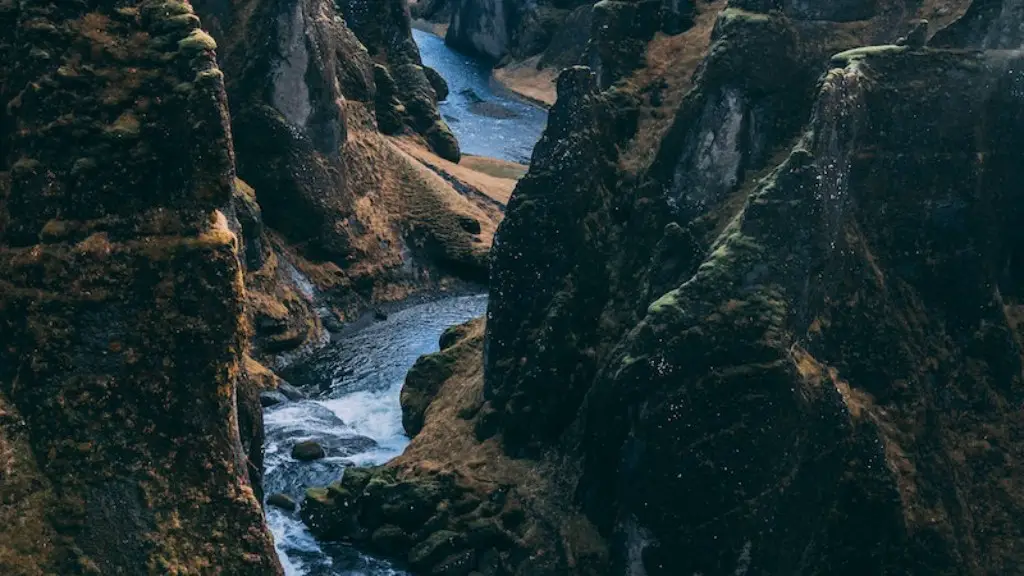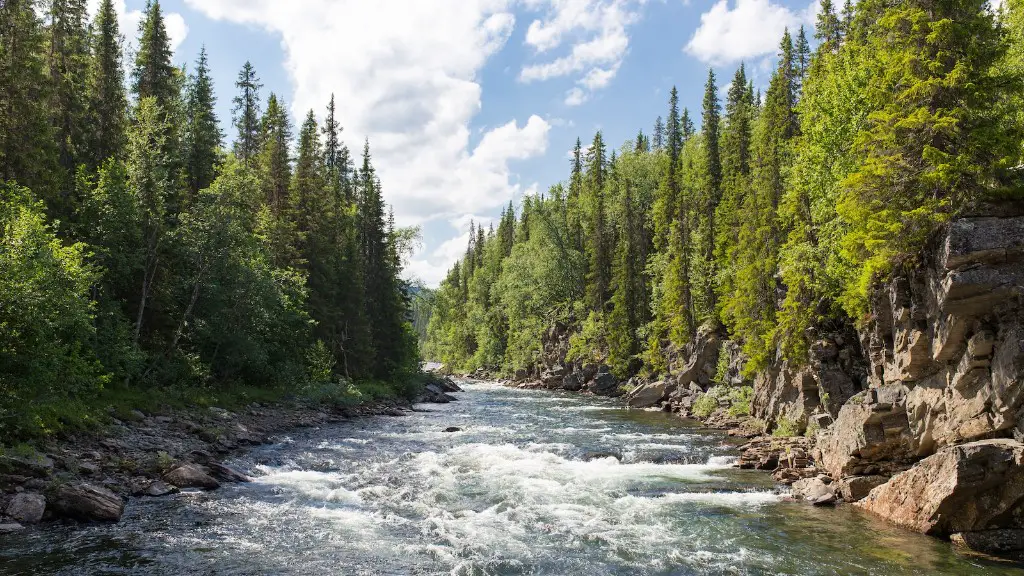History of the Mississippi
The Mississippi River is the second longest river in North America and has a long and fascinating history. Originating in the hills of Minnesota, USA, it slowly meanders southward through the US states of Wisconsin, Iowa, Illinois, Missouri, Kentucky, Arkansas, Tennessee, Mississippi and Louisiana before finally draining into the Gulf of Mexico. It is an iconic river, steeped in American folklore. From the lyrical writings of Mark Twain, to the jazz of New Orleans, the Mississippi has inspired the music, literature and culture of many generations.
The exact origin of the Mississippi is still a matter of debate. The source of the river is generally attributed to Lake Itasca, which is the main source of an extensive river system known as the Mississippi. But the full length is more than 2,340 miles and it has been suggested that other streams, creeks and watersheds may contribute to the total length of the river. Some historians believe that there may have been an earlier river system that contributed to the present-day Lower Mississippi.
Formation of the Mississippi River
The Mississippi River is formed by the combination of the Minnesota, Missouri and Ohio rivers, which all coalesce near St. Louis. These rivers have been slowly eroding the area by carrying away soil and rocks, creating deep valleys and canyons in the process. This process of erosion continues to shape the river today, creating unique geographical features along its path. As the river winds its way southward, it gets wider and deeper, accumulating sediment and creating new channels for flow.
The force of the water also carves out oxbow lakes, cutoffs and meander belts. These features form as the river’s velocity changes and the meanders move farther away from the main channel. Eventually, some of the bends will close off, creating small lakes called oxbow lakes. The meanders also cause the water to flow at a slower rate and the smaller channels form cutoffs, which shorten the path of the river.
Flow and Erosion
The Mississippi River has a wide variety of flow and erosion patterns due to its fluctuating levels of water. During flood seasons, water levels can rise rapidly and cause massive erosion. The riverbed can also shift quickly, causing large amounts of sediment to be carried downstream. This sediment can form natural levees, or banks of sand or soil, that help to protect low-lying areas from flooding.
Geologists and scientists also study the Mississippi River for its variation in flow and temperature. The combination of warm water from the Gulf of Mexico and cold water from the north create unique habitats for wildlife. The colder water supports a variety of species, from the endangered pallid sturgeon to the giant paddlefish.
The Role of Human Activity
Human activity has also impacted the flow of the Mississippi River. Large dams and other man-made structures have been built along the river to control floodwaters, create shipping lanes and provide hydroelectric power. These structures are designed to release controlled amounts of water to help regulate the river’s flow and reduce damage to communities downstream.
Dams also act as a physical barrier preventing the flow of sediment. As a result, the sediment accumulates, creating sandbars and other features that can obstruct the flow. To counteract this, the US army corps of engineers, who are responsible for managing the river, divert water through channels to reduce the buildup of sediment.
The End of the Mississippi River
The end of the Mississippi River is located at the Gulf of Mexico. Here, the river meets the saltwater of the gulf and forms a wide, muddy delta. The delta is constantly shifting due to the current and tides of the gulf, creating new channels and pushing old ones into the sea. This helps to replenish the surrounding wetlands with the sediment from the river.
The Mississippi River is one of the most iconic rivers in the world and its origin and end are nothing less than fascinating. From its headwaters in Lake Itasca to its end at the Gulf of Mexico, the Mississippi River has carved a path of history and culture that will remain with us for many generations to come.
Uses of the River
The Mississippi River has always been an essential resource for human civilization. In early times, it was a means of transportation and a source of food. Native Americans used it to hunt and fish, and many of their villages were built along its banks. As settlers moved west down the river, it provided them with a means of communication with the East, allowing for the exchange of goods and ideas.
Today, the Mississippi River serves many different roles. It is an important source of drinking water, irrigation water, and energy. It is also a major transportation route for barges carrying goods to and from the Gulf Coast. In addition, it contains rich deposits of petroleum, natural gas, and mineral resources, which have made it an important economic contributor for the region.
The Mississippi River has also been instrumental in flood control, providing a natural border that helps to contain floodwaters and regulate water levels in the region. Numerous dams, levees and flood control structures have been made over the years in order to help protect the river and its surrounding area.
Finally, the Mississippi River provides a recreational destination for fishing, boating, and nature viewing. Many parks and preserves have been established along its banks, providing visitors with a chance to experience the river up close and marvel at its natural beauty.
Social and Cultural Impact
The Mississippi River has played an important role in shaping the culture of the American South. Its meandering banks have served as the backdrop for countless stories, songs, and folklore. From Blues music in Memphis to the Plantation architecture of Louisiana, the river has helped to create a distinct Southern identity that has influenced the rest of the United States.
The river has also been a source of conflict, as states along its banks have argued over its management and control. In the middle of the 19th century, the US Supreme Court had to intervene in the conflict between the states of Louisiana, Mississippi and Tennessee over the ownership of the Mississippi River. This conflict was finally resolved with the formation of the Mississippi River Commission in 1879, which is now responsible for the management of the river.
The importance of the Mississippi River has been further exacerbated by its role in the shift from an agrarian society to an industrialized one. The river helped to facilitate the movement of goods, people, and resources to and from the different states along its banks. This has established a strong economic link between the states, connecting them in ways that have lasted for centuries.
Environmental Impact
The Mississippi River system is a major contributor to the ecology and health of the Gulf of Mexico. Nitrogen and phosphorus runoff from farms, fertilizers, and urban areas along its banks travel down the Mississippi and are emptied into the gulf. This leads to an increase in algae growth and the decrease the oxygen levels in the water, creating a dead zone in the gulf where marine life can not survive.
The river is also a major source of sediment, which is important for the growth of wetlands and the replenishment of coastal habitats. The flow of the river carries sediments that settle far out into the Gulf and form wetlands, barrier islands and other coastal ecosystems. The formation of these habitats serves as buffers against coastal storms, provide food and habitat for fish and other wildlife, and protect the shoreline from eroding.
The Mississippi River is an important resource for humans, animals and the environment. Its past, present and future are intertwined, making it a symbol of American history, culture, and progress. The river continues to provide an important means of communication and transportation as well a vital resource for drinking water, irrigation water, and energy. As we look to the future, it is important to protect the river and its surroundings and ensure that the unique resources and habitats it provides are preserved for future generations.
Conservation and Protection
With so many competing demands for the resources of the Mississippi River, it is important to protect and conserve this vital resource. There are several initiatives underway to restore and protect the river and its surroundings for future generations.
The Mississippi River Basin Healthy Watershed Initiative is a partnership between federal and state agencies and local non-profits to reduce nutrient runoff from farms and other sources. The initiative has already reduced nitrogen and phosphorus levels, increasing the health of the river and the Gulf of Mexico.
The Water Resources Development Act of 2007 also provides funding for the protection and restoration of key river habitats, such as wetlands, riparian forests and floodplains. This act provides financial assistance to states and localities to help maintain the ecological health of the Mississippi River and its surroundings.
The US Army Corps of Engineers also has several initiatives underway to maintain and improve the navigation, water control, and environmental integrity of the Mississippi River. These include the implementation of flood control projects, navigation improvements, and the implementation of environmental regulations. Through these efforts, the Corps is helping to protect the river and its surrounding environment for current and future generations.
Conclusion
The Mississippi River is an iconic river that has played an important role in the history and culture of the United States. From its headwaters in Minnesota to its end at the Gulf of Mexico, the river has provided an essential means of communication and transportation for countless generations. Human activity has both changed and used the river for its own purposes, but conservation efforts are underway to help protect and restore this important resource for future generations.





